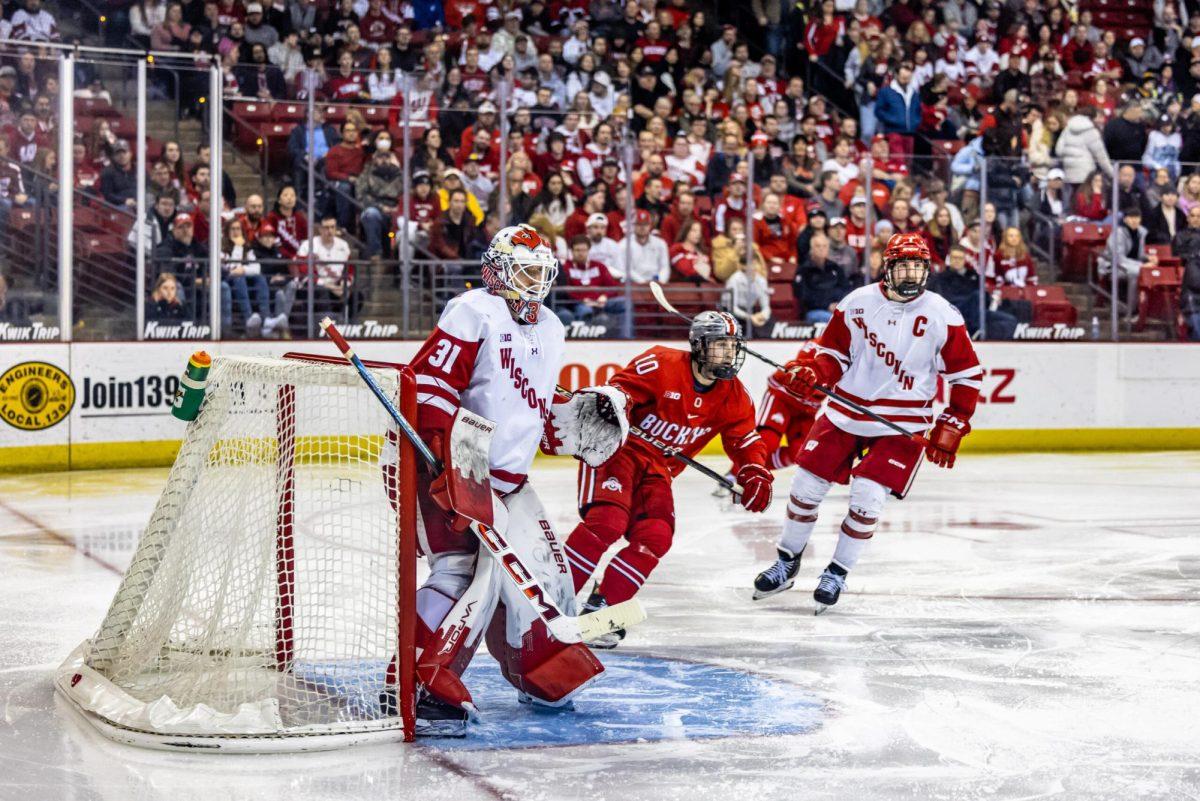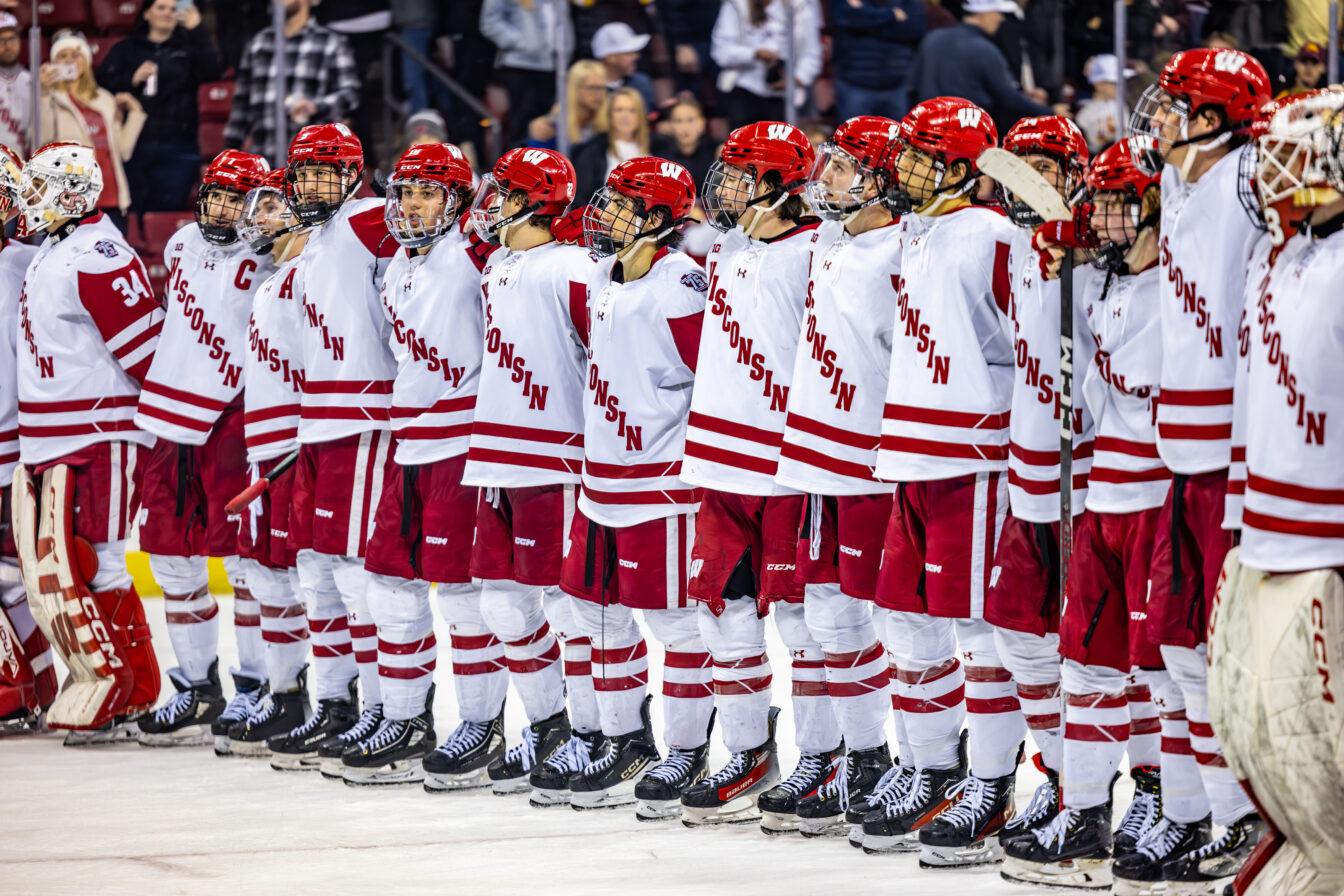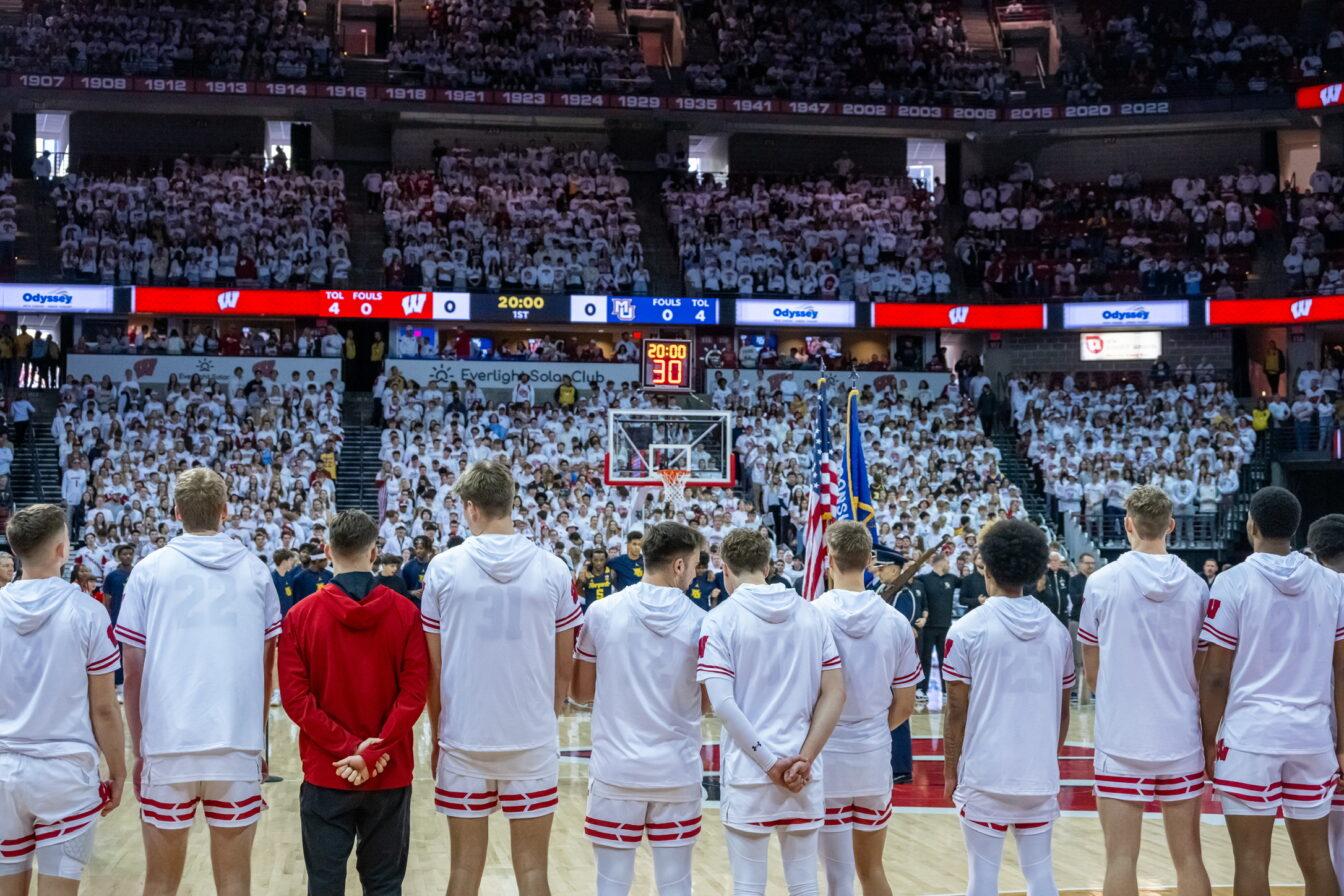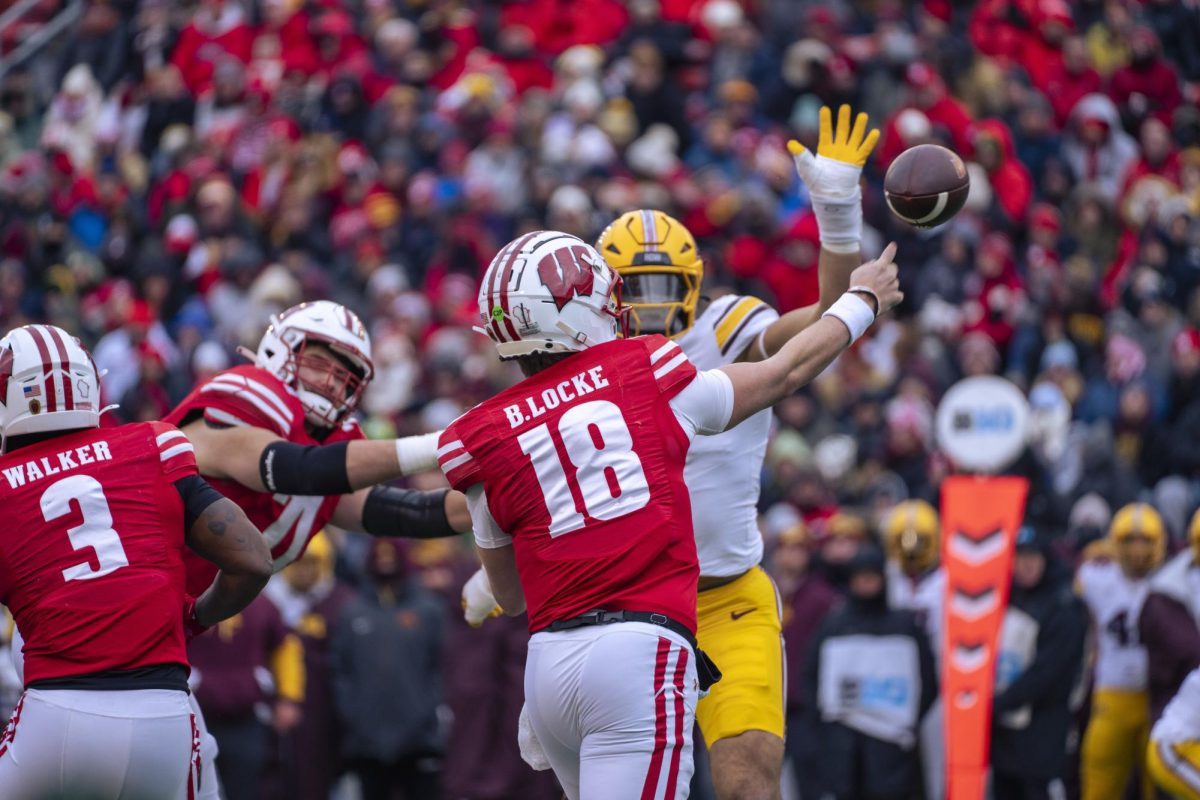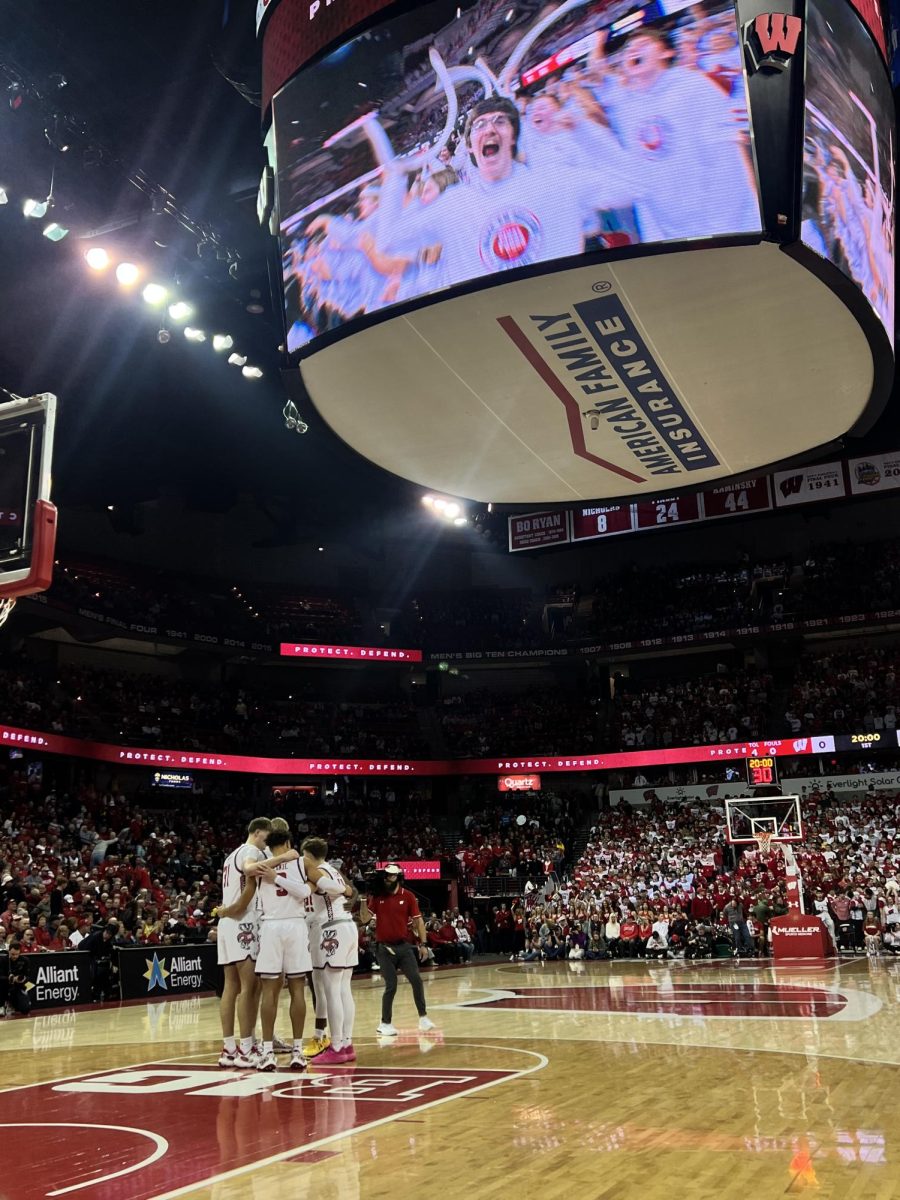[media-credit name=’Kelsey Fenton / The Badger Herald’ align=’alignnone’ width=’648′] [/media-credit]Things are about to change for the Wisconsin men’s hockey team in a B1G way.
[/media-credit]Things are about to change for the Wisconsin men’s hockey team in a B1G way.
After almost 43 years in the Western Collegiate Hockey Association, the Badgers will leave the conference next fall to join the new Big Ten conference in its inaugural season.
When the Badgers host the Penn State Nittany Lions this upcoming Sunday and Monday in their first meeting since PSU created a Division 1 program this fall, fans will get a glimpse of one of the Big Ten hockey conference’s new annual matchups.
Over the years, the WCHA has proven itself to be one of the toughest conferences in the country. Since 1951, the conference has produced 37 national champions and at lease one team in the National Championship round of the NCAA playoffs in 56 of the last 60 seasons.
For freshman forward Nic Kerdiles, the chance to play in the storied WCHA conference was a major factor in his decision to play hockey for Wisconsin.
“I’m really impressed by [this conference] and it is one the reasons I decided to come here,” Kerdiles said. “It’s got a lot of history, and it is unfortunate it is going away, but this year it has been a lot of fun. If you look through the standings, there are a lot of teams with only one point, two points difference.”
But beyond the current crop of players, the WCHA holds an important place in the history of hockey at UW.
UW interim assistant coach Matt Walsh played in the WCHA for the Badgers from 1982 to 1986 – earning a National Championship with the team as a freshman in 1983. While teams have joined the conference since he graduated, he believes the level of talent and competition in the WCHA over the years is unrivaled.
“You can’t take a night off,” Walsh said. “Maybe before some nights you could depending on who you played, but now … you can’t afford to take a night off.”
Joining Wisconsin in the inaugural season of the Big Ten conference next year are five other teams – Penn State, Ohio State, Michigan, Michigan State and Minnesota.
After years of consideration, the formation of the new conference was spurred on by the announcement this past offseason that Penn State would upgrade its club hockey team, the Penn State Icers, to a Division 1 program with a new name – the Nittany Lions.
According to Big Ten rules, six teams are required to have a conference championship, and before PSU’s announcement, only five traditional Big ten teams existed.
Now with six schools hosting Division 1 hockey programs, the Big Ten finally has the green light to start a hockey conference.
The move to a new Big Ten conference – while exciting for fans and players – means some of the Badgers’ traditional rivalry games will no longer be conference games with WCHA points on the line.
“It’s going to be different for sure,” Kerdiles said. “We are going to try to keep some of those rivalries. I talked to coach and I think they are already working on making sure we play North Dakota next year and keeping at least one rivalry going.”
Still, with only 20 conferences games slated for each of the inaugural members, this leaves 14 games for each team to schedule games with other nonconference opponents, such as North Dakota.
In addition to maintaining old rivals, Wisconsin will have its fair share of new rivalries to develop.
While Penn State’s history in college hockey may still be in its infancy, both Michigan and Michigan State already have successful hockey programs established.
In 2011, Michigan was the runner up to Minnesota-Duluth in the National Championship game while, just a few years earlier in 2007, Michigan State won it all.
Add those finishes to two National Championships in back-to-back years for Minnesota in 2002 and 2003 with a National Championship for Wisconsin in 2006, it becomes clear the Big Ten conference has all the makings of a potential powerhouse conference in the years to come.
Combine stronger nonconference matchups with a difficult conference slate and Walsh believes future schedules could have much more quality competition than in years past.
But, potentially more important for each of the teams entering the Big Ten, regularly scheduled matchups against familiar opponents could help strengthen ties to the sport for Wisconsin fans who are used to the Badgers playing teams like Ohio State and Michigan in football and basketball.
“Having Penn State, Ohio State, Michigan, Michigan State – all of those teams come in – to the average fan, they will recognize those teams,” junior defenseman Frankie Simonelli said. “When they hear Colorado College is coming to town or Denver, they might not be as familiar with it.”
“I think it will bring a bigger variety of fan base to our team and could help make the sport more popular [here].”



